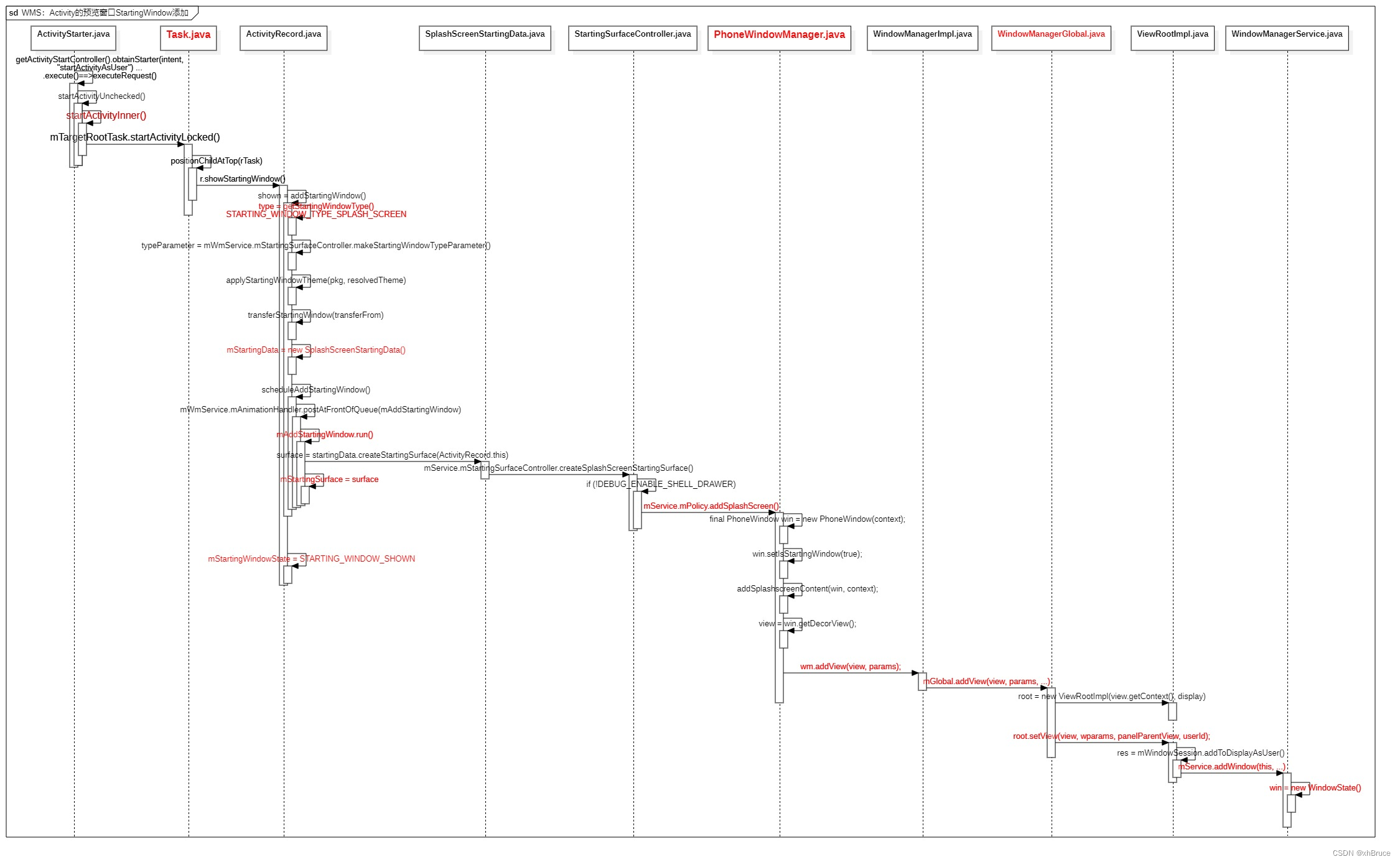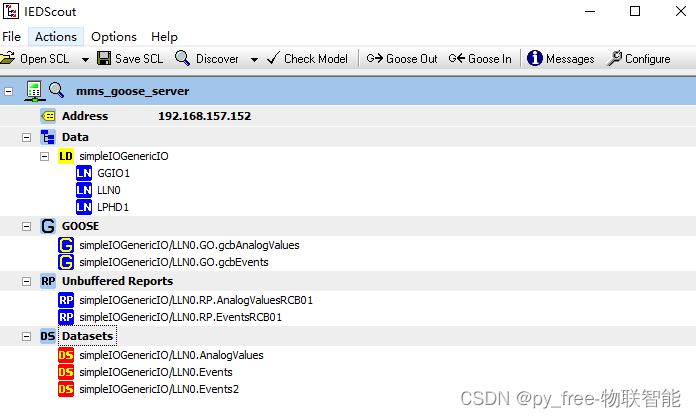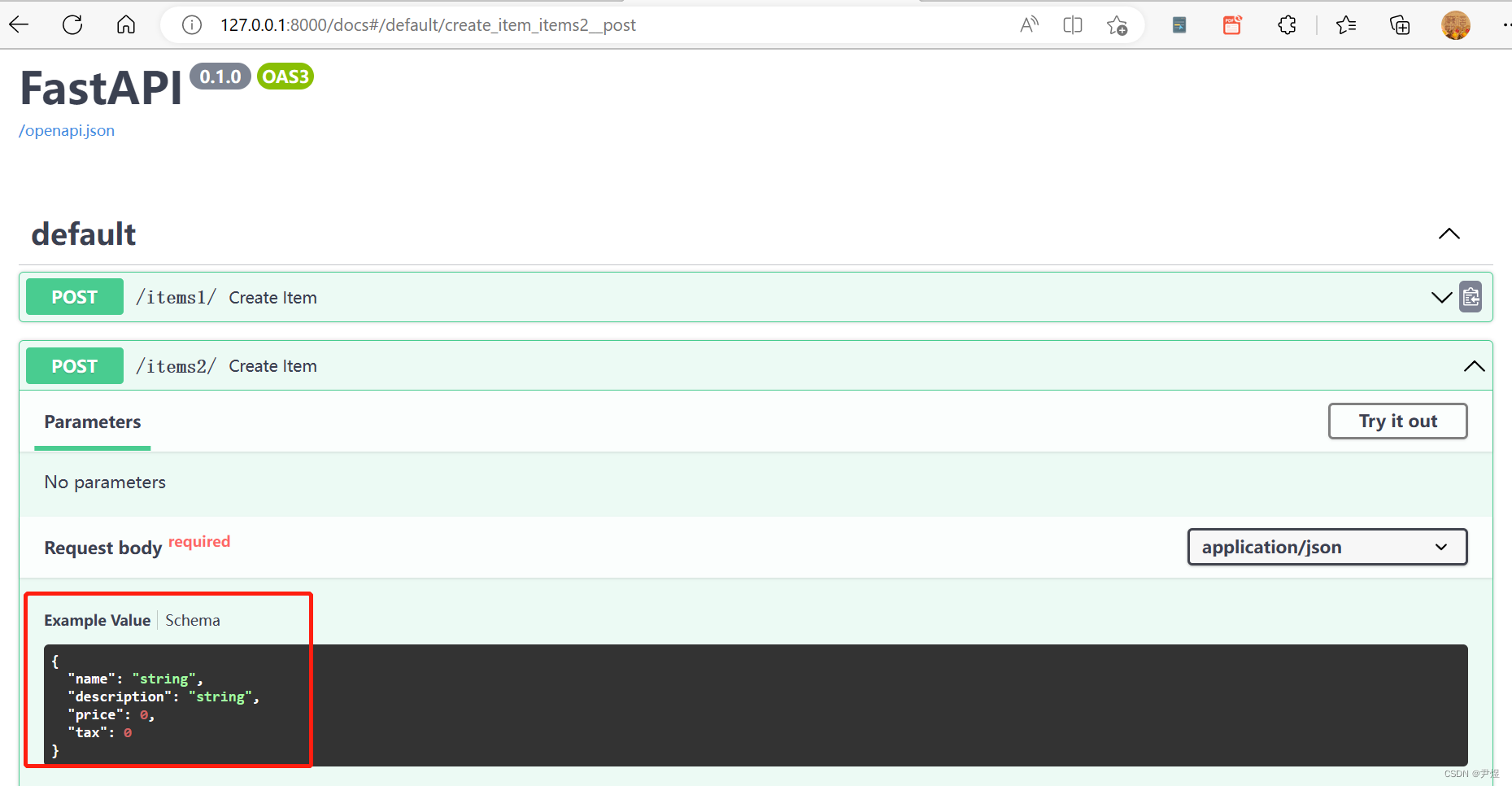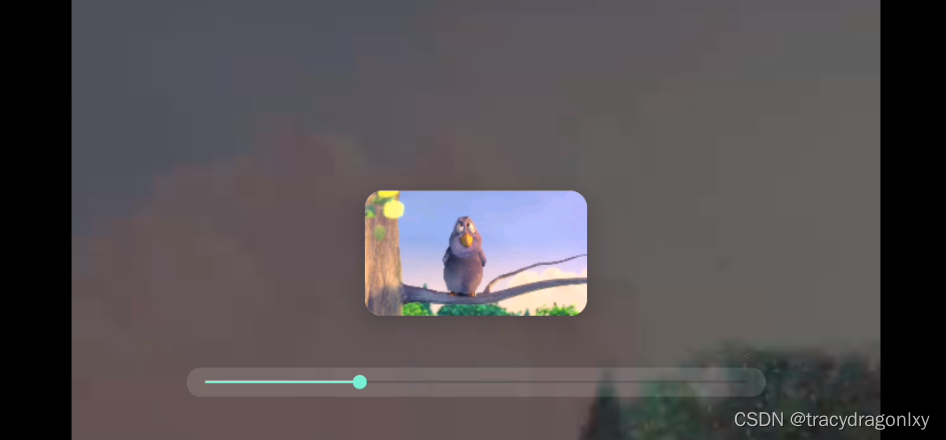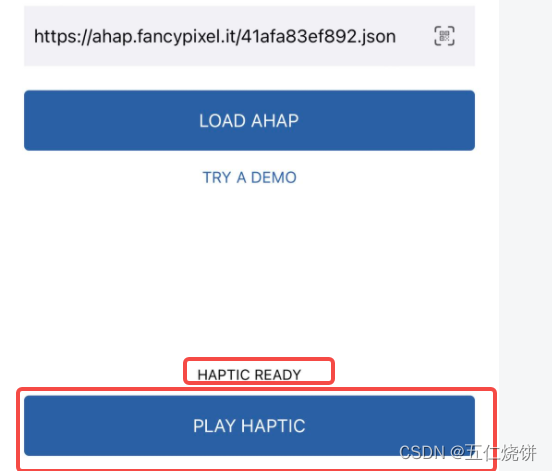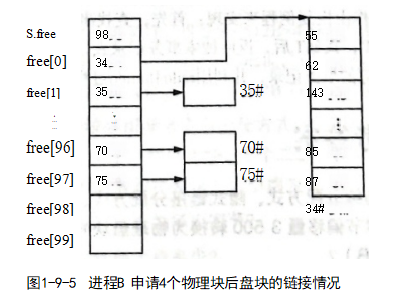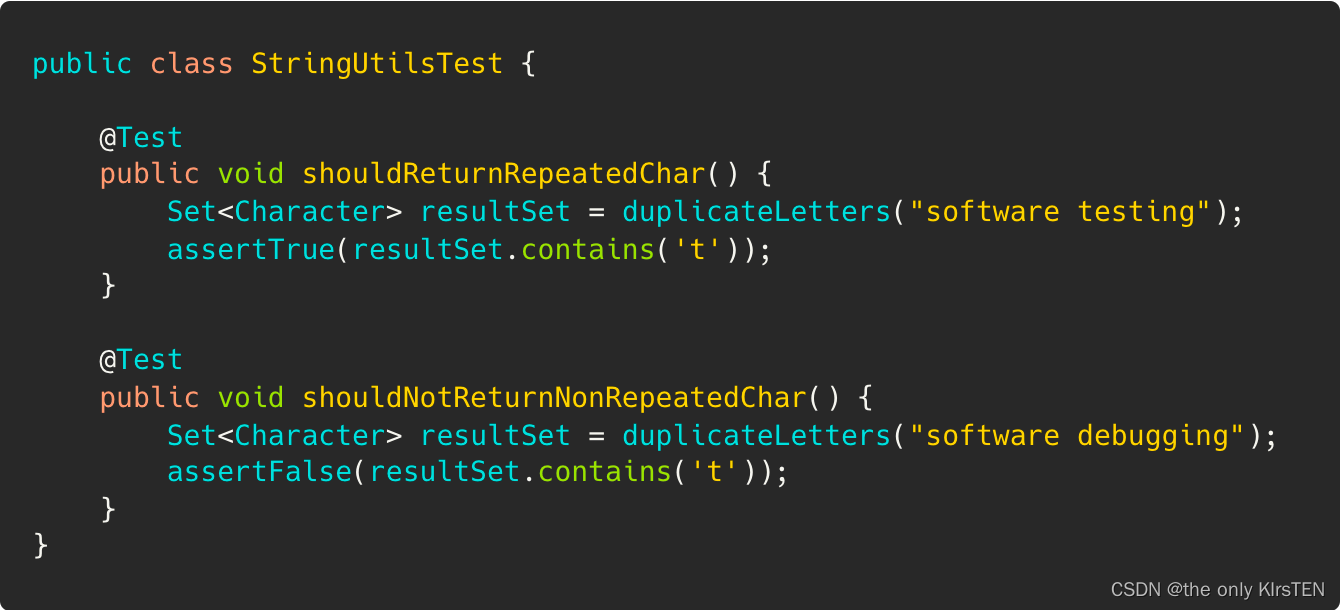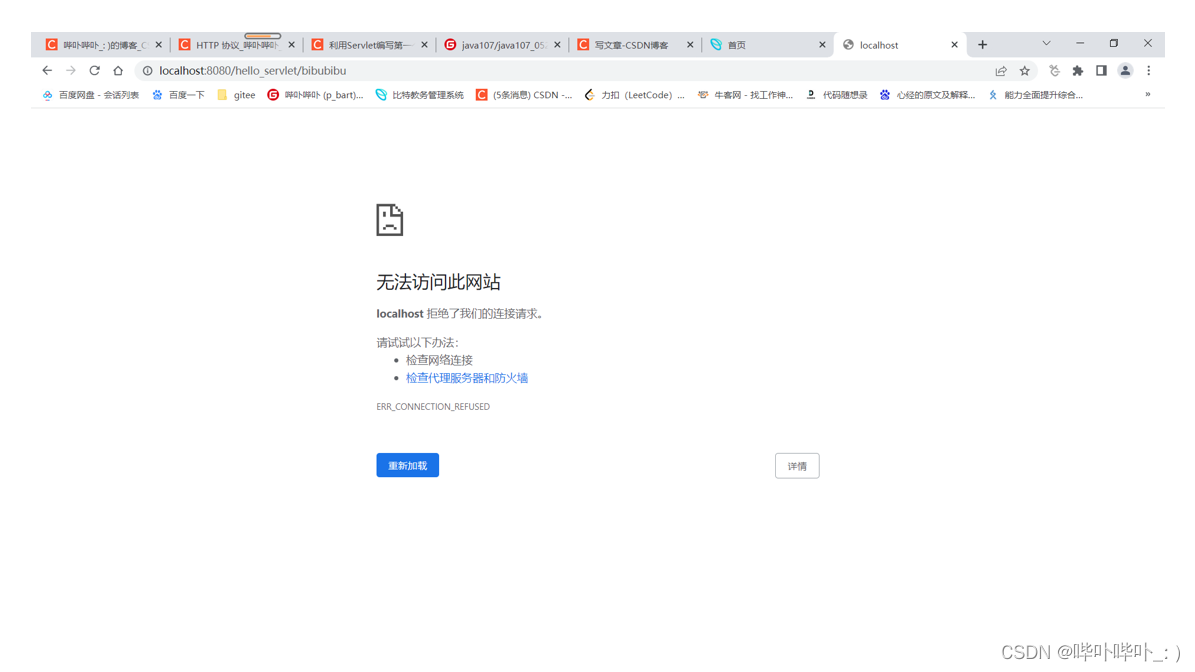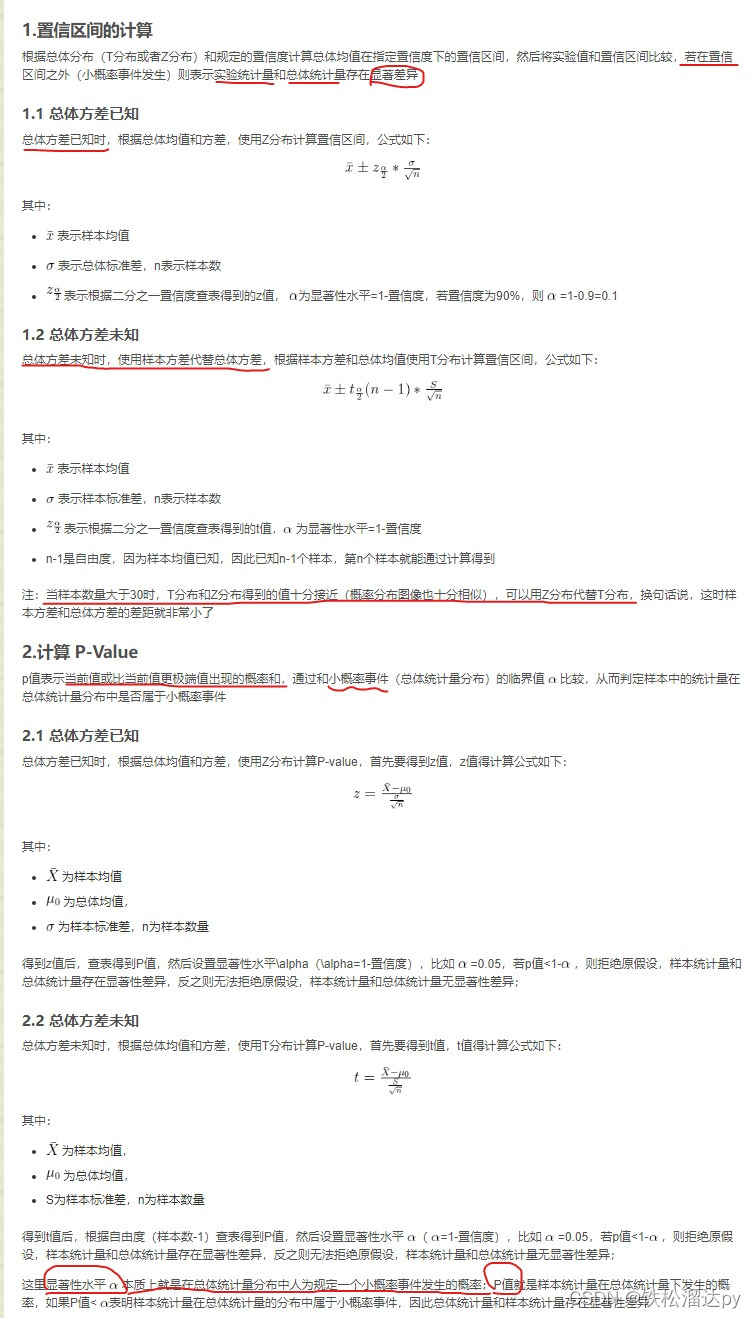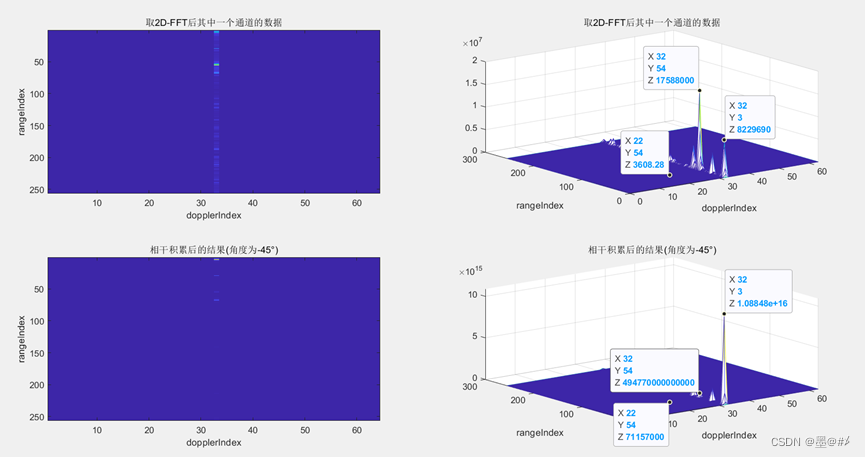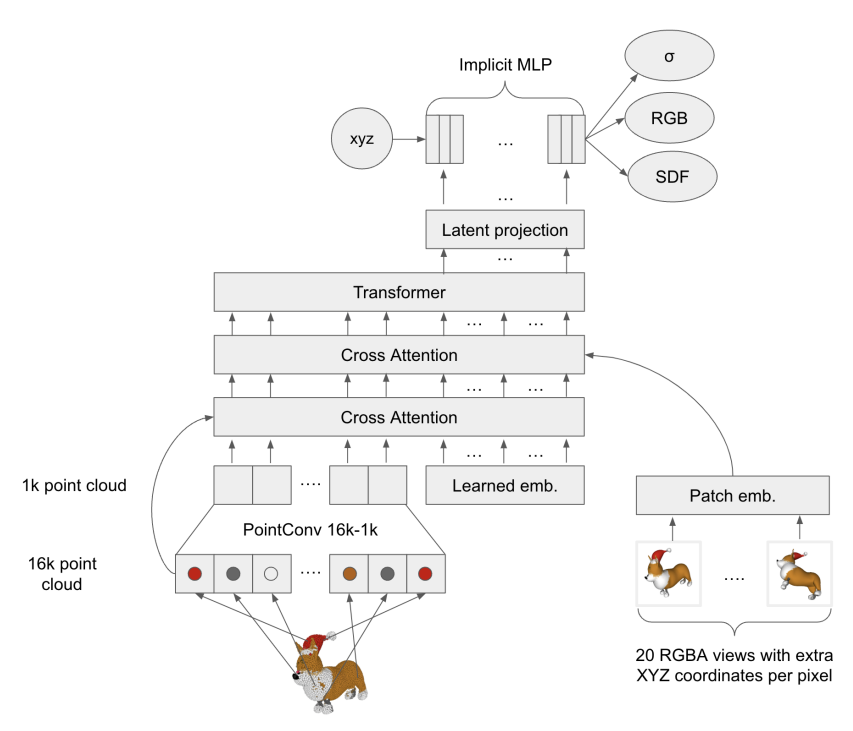Activity的预览窗口StartingWindow添加
- 1、Activity组件启动
- 2、ActivityStarter.java#startActivityInner() => 主要查看Task.java#startActivityLocked
- 3、ActivityRecord.java#addStartingWindow到WindowManagerService.java#addWindow
- 3.1 ActivityRecord.java#addStartingWindow
- 3.2 StartingSurfaceController.java#createStartingSurface
- 3.3 PhoneWindowManager.java#addSplashScreen
- 3.4 WindowManagerGlobal.java#addView
- 3.5 WindowManagerService.java#addWindow
- 4、简易时序图
android12-release
1、Activity组件启动
Activity组件启动后,窗口并非马上显示,而是先显示starting window,作为Activity的预览窗口。
查看 AMS:startActivity桌面启动应用 流程,接下来从ActivityStarter.java#startActivityInner()开始

2、ActivityStarter.java#startActivityInner() => 主要查看Task.java#startActivityLocked
positionChildAtTop(rTask)当Task中的最后一个活动已被删除,或者活动管理器服务正在重用任务,将该task移到栈顶- 如果allowMoveToFront=false,则不需要过渡动画和启动窗口,因为活动将不可见。
SHOW_APP_STARTING_PREVIEW设置为 false 可禁用启动新活动时显示的预览。
r.showStartingWindow()创建添加界面,最终调用到ActivityRecord.java#addStartingWindow ==> PhoneWindowManager.java#addSplashScreen
void startActivityLocked(ActivityRecord r, @Nullable ActivityRecord focusedTopActivity,
boolean newTask, boolean keepCurTransition, ActivityOptions options,
@Nullable ActivityRecord sourceRecord) {
Task rTask = r.getTask();
final boolean allowMoveToFront = options == null || !options.getAvoidMoveToFront();
final boolean isOrhasTask = rTask == this || hasChild(rTask);
// mLaunchTaskBehind tasks get placed at the back of the task stack.
if (!r.mLaunchTaskBehind && allowMoveToFront && (!isOrhasTask || newTask)) {
// Last activity in task had been removed or ActivityManagerService is reusing task.
// Insert or replace.
// Might not even be in.
positionChildAtTop(rTask);
}
Task task = null;
if (!newTask && isOrhasTask) {
// Starting activity cannot be occluding activity, otherwise starting window could be
// remove immediately without transferring to starting activity.
final ActivityRecord occludingActivity = getOccludingActivityAbove(r);
if (occludingActivity != null) {
// Here it is! Now, if this is not yet visible (occluded by another task) to the
// user, then just add it without starting; it will get started when the user
// navigates back to it.
ProtoLog.i(WM_DEBUG_ADD_REMOVE, "Adding activity %s to task %s "
+ "callers: %s", r, task,
new RuntimeException("here").fillInStackTrace());
rTask.positionChildAtTop(r);
ActivityOptions.abort(options);
return;
}
}
// Place a new activity at top of root task, so it is next to interact with the user.
// If we are not placing the new activity frontmost, we do not want to deliver the
// onUserLeaving callback to the actual frontmost activity
final Task activityTask = r.getTask();
if (task == activityTask && mChildren.indexOf(task) != (getChildCount() - 1)) {
mTaskSupervisor.mUserLeaving = false;
if (DEBUG_USER_LEAVING) Slog.v(TAG_USER_LEAVING,
"startActivity() behind front, mUserLeaving=false");
}
task = activityTask;
// Slot the activity into the history root task and proceed
ProtoLog.i(WM_DEBUG_ADD_REMOVE, "Adding activity %s to task %s "
+ "callers: %s", r, task, new RuntimeException("here").fillInStackTrace());
task.positionChildAtTop(r);
// The transition animation and starting window are not needed if {@code allowMoveToFront}
// is false, because the activity won't be visible.
if ((!isHomeOrRecentsRootTask() || hasActivity()) && allowMoveToFront) {
final DisplayContent dc = mDisplayContent;
if (DEBUG_TRANSITION) Slog.v(TAG_TRANSITION,
"Prepare open transition: starting " + r);
// TODO(shell-transitions): record NO_ANIMATION flag somewhere.
if ((r.intent.getFlags() & Intent.FLAG_ACTIVITY_NO_ANIMATION) != 0) {
dc.prepareAppTransition(TRANSIT_NONE);
mTaskSupervisor.mNoAnimActivities.add(r);
} else {
int transit = TRANSIT_OLD_ACTIVITY_OPEN;
if (newTask) {
if (r.mLaunchTaskBehind) {
transit = TRANSIT_OLD_TASK_OPEN_BEHIND;
} else {
// If a new task is being launched, then mark the existing top activity as
// supporting picture-in-picture while pausing only if the starting activity
// would not be considered an overlay on top of the current activity
// (eg. not fullscreen, or the assistant)
if (canEnterPipOnTaskSwitch(focusedTopActivity,
null /* toFrontTask */, r, options)) {
focusedTopActivity.supportsEnterPipOnTaskSwitch = true;
}
transit = TRANSIT_OLD_TASK_OPEN;
}
}
dc.prepareAppTransition(TRANSIT_OPEN);
mTaskSupervisor.mNoAnimActivities.remove(r);
}
boolean doShow = true;
if (newTask) {
// Even though this activity is starting fresh, we still need
// to reset it to make sure we apply affinities to move any
// existing activities from other tasks in to it.
// If the caller has requested that the target task be
// reset, then do so.
if ((r.intent.getFlags() & Intent.FLAG_ACTIVITY_RESET_TASK_IF_NEEDED) != 0) {
resetTaskIfNeeded(r, r);
doShow = topRunningNonDelayedActivityLocked(null) == r;
}
} else if (options != null && options.getAnimationType()
== ActivityOptions.ANIM_SCENE_TRANSITION) {
doShow = false;
}
if (r.mLaunchTaskBehind) {
// Don't do a starting window for mLaunchTaskBehind. More importantly make sure we
// tell WindowManager that r is visible even though it is at the back of the root
// task.
r.setVisibility(true);
ensureActivitiesVisible(null, 0, !PRESERVE_WINDOWS);
// Go ahead to execute app transition for this activity since the app transition
// will not be triggered through the resume channel.
mDisplayContent.executeAppTransition();
} else if (SHOW_APP_STARTING_PREVIEW && doShow) {
// Figure out if we are transitioning from another activity that is
// "has the same starting icon" as the next one. This allows the
// window manager to keep the previous window it had previously
// created, if it still had one.
Task prevTask = r.getTask();
ActivityRecord prev = prevTask.topActivityWithStartingWindow();
if (prev != null) {
// We don't want to reuse the previous starting preview if:
// (1) The current activity is in a different task.
if (prev.getTask() != prevTask) {
prev = null;
}
// (2) The current activity is already displayed.
else if (prev.nowVisible) {
prev = null;
}
}
r.showStartingWindow(prev, newTask, isTaskSwitch(r, focusedTopActivity),
true /* startActivity */, sourceRecord);
}
} else {
// If this is the first activity, don't do any fancy animations,
// because there is nothing for it to animate on top of.
ActivityOptions.abort(options);
}
}
3、ActivityRecord.java#addStartingWindow到WindowManagerService.java#addWindow
3.1 ActivityRecord.java#addStartingWindow
- 参数:
prev– 包含起始窗口的上一个活动。
startActivity– 此活动是否只是从启动器创建的。
sourceRecord– 启动此活动的源活动。type = getStartingWindowType()获取为STARTING_WINDOW_TYPE_SPLASH_SCREENnew SplashScreenStartingData()为StartingWindow窗口创建相关信息scheduleAddStartingWindow()通过Handler执行AddStartingWindow创建StartingSurfaceController.javam#createSplashScreenStartingSurface => Service.mPolicy.addSplashScreen()
/**
* @param prev Previous activity which contains a starting window.
* @param startActivity Whether this activity is just created from starter.
* @param sourceRecord The source activity which start this activity.
*/
void showStartingWindow(ActivityRecord prev, boolean newTask, boolean taskSwitch,
boolean startActivity, ActivityRecord sourceRecord) {
if (mTaskOverlay) {
// We don't show starting window for overlay activities.
return;
}
if (mPendingOptions != null
&& mPendingOptions.getAnimationType() == ActivityOptions.ANIM_SCENE_TRANSITION) {
// Don't show starting window when using shared element transition.
return;
}
final CompatibilityInfo compatInfo =
mAtmService.compatibilityInfoForPackageLocked(info.applicationInfo);
mSplashScreenStyleEmpty = shouldUseEmptySplashScreen(sourceRecord, startActivity);
final int splashScreenTheme = startActivity ? getSplashscreenTheme() : 0;
final int resolvedTheme = evaluateStartingWindowTheme(prev, packageName, theme,
splashScreenTheme);
final boolean activityCreated =
mState.ordinal() >= STARTED.ordinal() && mState.ordinal() <= STOPPED.ordinal();
// If this activity is just created and all activities below are finish, treat this
// scenario as warm launch.
final boolean newSingleActivity = !newTask && !activityCreated
&& task.getActivity((r) -> !r.finishing && r != this) == null;
final boolean shown = addStartingWindow(packageName, resolvedTheme,
compatInfo, nonLocalizedLabel, labelRes, icon, logo, windowFlags,
prev != null ? prev.appToken : null,
newTask || newSingleActivity, taskSwitch, isProcessRunning(),
allowTaskSnapshot(), activityCreated, mSplashScreenStyleEmpty);
if (shown) {
mStartingWindowState = STARTING_WINDOW_SHOWN;
}
}
3.2 StartingSurfaceController.java#createStartingSurface
- 属性
static final boolean DEBUG_ENABLE_SHELL_DRAWER = SystemProperties.getBoolean("persist.debug.shell_starting_surface", true);mService.mPolicy.addSplashScreen()代理类Policy->PhoneWindowManager.java#addSplashScreen
static final boolean DEBUG_ENABLE_SHELL_DRAWER =
SystemProperties.getBoolean("persist.debug.shell_starting_surface", true);
StartingSurface createSplashScreenStartingSurface(ActivityRecord activity, String packageName,
int theme, CompatibilityInfo compatInfo, CharSequence nonLocalizedLabel, int labelRes,
int icon, int logo, int windowFlags, Configuration overrideConfig, int displayId) {
if (!DEBUG_ENABLE_SHELL_DRAWER) {
return mService.mPolicy.addSplashScreen(activity.token, activity.mUserId, packageName,
theme, compatInfo, nonLocalizedLabel, labelRes, icon, logo, windowFlags,
overrideConfig, displayId);
}
synchronized (mService.mGlobalLock) {
final Task task = activity.getTask();
if (task != null && mService.mAtmService.mTaskOrganizerController.addStartingWindow(
task, activity, theme, null /* taskSnapshot */)) {
return new ShellStartingSurface(task);
}
}
return null;
}
3.3 PhoneWindowManager.java#addSplashScreen
- 创建
new PhoneWindow(context)并设置win.setType(WindowManager.LayoutParams.TYPE_APPLICATION_STARTING);view = win.getDecorView()获取DecorView,并通过WindowManager设置添加界面wm.addView(view, params),这里获取的是WindowManagerImpl.java;最终调用到WindowManagerGlobal.java#addView -> ViewRootImpl.java#setView -> Session extends IWindowSession.Stub#addToDisplayAsUser -> WindowManagerService.java#addWindow
public StartingSurface addSplashScreen(IBinder appToken, int userId, String packageName,
int theme, CompatibilityInfo compatInfo, CharSequence nonLocalizedLabel, int labelRes,
int icon, int logo, int windowFlags, Configuration overrideConfig, int displayId) {
if (!SHOW_SPLASH_SCREENS) {
return null;
}
if (packageName == null) {
return null;
}
WindowManager wm = null;
View view = null;
try {
Context context = mContext;
if (DEBUG_SPLASH_SCREEN) Slog.d(TAG, "addSplashScreen " + packageName
+ ": nonLocalizedLabel=" + nonLocalizedLabel + " theme="
+ Integer.toHexString(theme));
// Obtain proper context to launch on the right display.
final Context displayContext = getDisplayContext(context, displayId);
if (displayContext == null) {
// Can't show splash screen on requested display, so skip showing at all.
return null;
}
context = displayContext;
if (theme != context.getThemeResId() || labelRes != 0) {
try {
context = context.createPackageContextAsUser(packageName, CONTEXT_RESTRICTED,
UserHandle.of(userId));
context.setTheme(theme);
} catch (PackageManager.NameNotFoundException e) {
Slog.w(TAG, "Failed creating package context with package name "
+ packageName + " for user " + userId, e);
}
}
if (overrideConfig != null && !overrideConfig.equals(EMPTY)) {
if (DEBUG_SPLASH_SCREEN) Slog.d(TAG, "addSplashScreen: creating context based"
+ " on overrideConfig" + overrideConfig + " for splash screen");
final Context overrideContext = context.createConfigurationContext(overrideConfig);
overrideContext.setTheme(theme);
final TypedArray typedArray = overrideContext.obtainStyledAttributes(
com.android.internal.R.styleable.Window);
final int resId = typedArray.getResourceId(R.styleable.Window_windowBackground, 0);
if (resId != 0 && overrideContext.getDrawable(resId) != null) {
// We want to use the windowBackground for the override context if it is
// available, otherwise we use the default one to make sure a themed starting
// window is displayed for the app.
if (DEBUG_SPLASH_SCREEN) Slog.d(TAG, "addSplashScreen: apply overrideConfig"
+ overrideConfig + " to starting window resId=" + resId);
context = overrideContext;
}
typedArray.recycle();
}
final PhoneWindow win = new PhoneWindow(context);
win.setIsStartingWindow(true);
CharSequence label = context.getResources().getText(labelRes, null);
// Only change the accessibility title if the label is localized
if (label != null) {
win.setTitle(label, true);
} else {
win.setTitle(nonLocalizedLabel, false);
}
win.setType(
WindowManager.LayoutParams.TYPE_APPLICATION_STARTING);
synchronized (mWindowManagerFuncs.getWindowManagerLock()) {
// Assumes it's safe to show starting windows of launched apps while
// the keyguard is being hidden. This is okay because starting windows never show
// secret information.
// TODO(b/113840485): Occluded may not only happen on default display
if (displayId == DEFAULT_DISPLAY && mKeyguardOccluded) {
windowFlags |= FLAG_SHOW_WHEN_LOCKED;
}
}
// Force the window flags: this is a fake window, so it is not really
// touchable or focusable by the user. We also add in the ALT_FOCUSABLE_IM
// flag because we do know that the next window will take input
// focus, so we want to get the IME window up on top of us right away.
win.setFlags(
windowFlags|
WindowManager.LayoutParams.FLAG_NOT_TOUCHABLE|
WindowManager.LayoutParams.FLAG_NOT_FOCUSABLE|
WindowManager.LayoutParams.FLAG_ALT_FOCUSABLE_IM,
windowFlags|
WindowManager.LayoutParams.FLAG_NOT_TOUCHABLE|
WindowManager.LayoutParams.FLAG_NOT_FOCUSABLE|
WindowManager.LayoutParams.FLAG_ALT_FOCUSABLE_IM);
win.setDefaultIcon(icon);
win.setDefaultLogo(logo);
win.setLayout(WindowManager.LayoutParams.MATCH_PARENT,
WindowManager.LayoutParams.MATCH_PARENT);
final WindowManager.LayoutParams params = win.getAttributes();
params.token = appToken;
params.packageName = packageName;
params.windowAnimations = win.getWindowStyle().getResourceId(
com.android.internal.R.styleable.Window_windowAnimationStyle, 0);
params.privateFlags |= WindowManager.LayoutParams.SYSTEM_FLAG_SHOW_FOR_ALL_USERS;
// Setting as trusted overlay to let touches pass through. This is safe because this
// window is controlled by the system.
params.privateFlags |= WindowManager.LayoutParams.PRIVATE_FLAG_TRUSTED_OVERLAY;
if (!compatInfo.supportsScreen()) {
params.privateFlags |= WindowManager.LayoutParams.PRIVATE_FLAG_COMPATIBLE_WINDOW;
}
params.setTitle("Splash Screen " + packageName);
addSplashscreenContent(win, context);
wm = (WindowManager) context.getSystemService(WINDOW_SERVICE);
view = win.getDecorView();
if (DEBUG_SPLASH_SCREEN) Slog.d(TAG, "Adding splash screen window for "
+ packageName + " / " + appToken + ": " + (view.getParent() != null ? view : null));
wm.addView(view, params);
// Only return the view if it was successfully added to the
// window manager... which we can tell by it having a parent.
return view.getParent() != null ? new SplashScreenSurface(view, appToken) : null;
} catch (WindowManager.BadTokenException e) {
// ignore
Log.w(TAG, appToken + " already running, starting window not displayed. " +
e.getMessage());
} catch (RuntimeException e) {
// don't crash if something else bad happens, for example a
// failure loading resources because we are loading from an app
// on external storage that has been unmounted.
Log.w(TAG, appToken + " failed creating starting window", e);
} finally {
if (view != null && view.getParent() == null) {
Log.w(TAG, "view not successfully added to wm, removing view");
wm.removeViewImmediate(view);
}
}
return null;
}
3.4 WindowManagerGlobal.java#addView
- 创建
new ViewRootImpl(view.getContext(), display)root.setView(view, wparams, panelParentView, userId)设置添加界面
public void addView(View view, ViewGroup.LayoutParams params,
Display display, Window parentWindow, int userId) {
if (view == null) {
throw new IllegalArgumentException("view must not be null");
}
if (display == null) {
throw new IllegalArgumentException("display must not be null");
}
if (!(params instanceof WindowManager.LayoutParams)) {
throw new IllegalArgumentException("Params must be WindowManager.LayoutParams");
}
final WindowManager.LayoutParams wparams = (WindowManager.LayoutParams) params;
if (parentWindow != null) {
parentWindow.adjustLayoutParamsForSubWindow(wparams);
} else {
// If there's no parent, then hardware acceleration for this view is
// set from the application's hardware acceleration setting.
final Context context = view.getContext();
if (context != null
&& (context.getApplicationInfo().flags
& ApplicationInfo.FLAG_HARDWARE_ACCELERATED) != 0) {
wparams.flags |= WindowManager.LayoutParams.FLAG_HARDWARE_ACCELERATED;
}
}
ViewRootImpl root;
View panelParentView = null;
synchronized (mLock) {
// Start watching for system property changes.
if (mSystemPropertyUpdater == null) {
mSystemPropertyUpdater = new Runnable() {
@Override public void run() {
synchronized (mLock) {
for (int i = mRoots.size() - 1; i >= 0; --i) {
mRoots.get(i).loadSystemProperties();
}
}
}
};
SystemProperties.addChangeCallback(mSystemPropertyUpdater);
}
int index = findViewLocked(view, false);
if (index >= 0) {
if (mDyingViews.contains(view)) {
// Don't wait for MSG_DIE to make it's way through root's queue.
mRoots.get(index).doDie();
} else {
throw new IllegalStateException("View " + view
+ " has already been added to the window manager.");
}
// The previous removeView() had not completed executing. Now it has.
}
// If this is a panel window, then find the window it is being
// attached to for future reference.
if (wparams.type >= WindowManager.LayoutParams.FIRST_SUB_WINDOW &&
wparams.type <= WindowManager.LayoutParams.LAST_SUB_WINDOW) {
final int count = mViews.size();
for (int i = 0; i < count; i++) {
if (mRoots.get(i).mWindow.asBinder() == wparams.token) {
panelParentView = mViews.get(i);
}
}
}
root = new ViewRootImpl(view.getContext(), display);
view.setLayoutParams(wparams);
mViews.add(view);
mRoots.add(root);
mParams.add(wparams);
// do this last because it fires off messages to start doing things
try {
root.setView(view, wparams, panelParentView, userId);
} catch (RuntimeException e) {
// BadTokenException or InvalidDisplayException, clean up.
if (index >= 0) {
removeViewLocked(index, true);
}
throw e;
}
}
}
3.5 WindowManagerService.java#addWindow
type == TYPE_APPLICATION_STARTING通过type检测activity.mStartingWindow、activity.mStartingData- 创建
win = new WindowState()
addWindow(Session session, IWindow client, LayoutParams attrs, int viewVisibility,
int displayId, int requestUserId, InsetsState requestedVisibility,
InputChannel outInputChannel, InsetsState outInsetsState,
InsetsSourceControl[] outActiveControls) {
Arrays.fill(outActiveControls, null);
int[] appOp = new int[1];
final boolean isRoundedCornerOverlay = (attrs.privateFlags
& PRIVATE_FLAG_IS_ROUNDED_CORNERS_OVERLAY) != 0;
int res = mPolicy.checkAddPermission(attrs.type, isRoundedCornerOverlay, attrs.packageName,
appOp);
if (res != ADD_OKAY) {
return res;
}
WindowState parentWindow = null;
final int callingUid = Binder.getCallingUid();
final int callingPid = Binder.getCallingPid();
final long origId = Binder.clearCallingIdentity();
final int type = attrs.type;
synchronized (mGlobalLock) {
if (!mDisplayReady) {
throw new IllegalStateException("Display has not been initialialized");
}
final DisplayContent displayContent = getDisplayContentOrCreate(displayId, attrs.token);
if (displayContent == null) {
ProtoLog.w(WM_ERROR, "Attempted to add window to a display that does "
+ "not exist: %d. Aborting.", displayId);
return WindowManagerGlobal.ADD_INVALID_DISPLAY;
}
if (!displayContent.hasAccess(session.mUid)) {
ProtoLog.w(WM_ERROR,
"Attempted to add window to a display for which the application "
+ "does not have access: %d. Aborting.",
displayContent.getDisplayId());
return WindowManagerGlobal.ADD_INVALID_DISPLAY;
}
if (mWindowMap.containsKey(client.asBinder())) {
ProtoLog.w(WM_ERROR, "Window %s is already added", client);
return WindowManagerGlobal.ADD_DUPLICATE_ADD;
}
if (type >= FIRST_SUB_WINDOW && type <= LAST_SUB_WINDOW) {
parentWindow = windowForClientLocked(null, attrs.token, false);
if (parentWindow == null) {
ProtoLog.w(WM_ERROR, "Attempted to add window with token that is not a window: "
+ "%s. Aborting.", attrs.token);
return WindowManagerGlobal.ADD_BAD_SUBWINDOW_TOKEN;
}
if (parentWindow.mAttrs.type >= FIRST_SUB_WINDOW
&& parentWindow.mAttrs.type <= LAST_SUB_WINDOW) {
ProtoLog.w(WM_ERROR, "Attempted to add window with token that is a sub-window: "
+ "%s. Aborting.", attrs.token);
return WindowManagerGlobal.ADD_BAD_SUBWINDOW_TOKEN;
}
}
if (type == TYPE_PRIVATE_PRESENTATION && !displayContent.isPrivate()) {
ProtoLog.w(WM_ERROR,
"Attempted to add private presentation window to a non-private display. "
+ "Aborting.");
return WindowManagerGlobal.ADD_PERMISSION_DENIED;
}
if (type == TYPE_PRESENTATION && !displayContent.getDisplay().isPublicPresentation()) {
ProtoLog.w(WM_ERROR,
"Attempted to add presentation window to a non-suitable display. "
+ "Aborting.");
return WindowManagerGlobal.ADD_INVALID_DISPLAY;
}
int userId = UserHandle.getUserId(session.mUid);
if (requestUserId != userId) {
try {
mAmInternal.handleIncomingUser(callingPid, callingUid, requestUserId,
false /*allowAll*/, ALLOW_NON_FULL, null, null);
} catch (Exception exp) {
ProtoLog.w(WM_ERROR, "Trying to add window with invalid user=%d",
requestUserId);
return WindowManagerGlobal.ADD_INVALID_USER;
}
// It's fine to use this userId
userId = requestUserId;
}
ActivityRecord activity = null;
final boolean hasParent = parentWindow != null;
// Use existing parent window token for child windows since they go in the same token
// as there parent window so we can apply the same policy on them.
WindowToken token = displayContent.getWindowToken(
hasParent ? parentWindow.mAttrs.token : attrs.token);
// If this is a child window, we want to apply the same type checking rules as the
// parent window type.
final int rootType = hasParent ? parentWindow.mAttrs.type : type;
boolean addToastWindowRequiresToken = false;
final IBinder windowContextToken = attrs.mWindowContextToken;
if (token == null) {
if (!unprivilegedAppCanCreateTokenWith(parentWindow, callingUid, type,
rootType, attrs.token, attrs.packageName)) {
return WindowManagerGlobal.ADD_BAD_APP_TOKEN;
}
if (hasParent) {
// Use existing parent window token for child windows.
token = parentWindow.mToken;
} else if (mWindowContextListenerController.hasListener(windowContextToken)) {
// Respect the window context token if the user provided it.
final IBinder binder = attrs.token != null ? attrs.token : windowContextToken;
final Bundle options = mWindowContextListenerController
.getOptions(windowContextToken);
token = new WindowToken.Builder(this, binder, type)
.setDisplayContent(displayContent)
.setOwnerCanManageAppTokens(session.mCanAddInternalSystemWindow)
.setRoundedCornerOverlay(isRoundedCornerOverlay)
.setFromClientToken(true)
.setOptions(options)
.build();
} else {
final IBinder binder = attrs.token != null ? attrs.token : client.asBinder();
token = new WindowToken.Builder(this, binder, type)
.setDisplayContent(displayContent)
.setOwnerCanManageAppTokens(session.mCanAddInternalSystemWindow)
.setRoundedCornerOverlay(isRoundedCornerOverlay)
.build();
}
} else if (rootType >= FIRST_APPLICATION_WINDOW
&& rootType <= LAST_APPLICATION_WINDOW) {
activity = token.asActivityRecord();
if (activity == null) {
ProtoLog.w(WM_ERROR, "Attempted to add window with non-application token "
+ ".%s Aborting.", token);
return WindowManagerGlobal.ADD_NOT_APP_TOKEN;
} else if (activity.getParent() == null) {
ProtoLog.w(WM_ERROR, "Attempted to add window with exiting application token "
+ ".%s Aborting.", token);
return WindowManagerGlobal.ADD_APP_EXITING;
} else if (type == TYPE_APPLICATION_STARTING) {
if (activity.mStartingWindow != null) {
ProtoLog.w(WM_ERROR, "Attempted to add starting window to "
+ "token with already existing starting window");
return WindowManagerGlobal.ADD_DUPLICATE_ADD;
}
if (activity.mStartingData == null) {
ProtoLog.w(WM_ERROR, "Attempted to add starting window to "
+ "token but already cleaned");
return WindowManagerGlobal.ADD_DUPLICATE_ADD;
}
}
} else if (rootType == TYPE_INPUT_METHOD) {
if (token.windowType != TYPE_INPUT_METHOD) {
ProtoLog.w(WM_ERROR, "Attempted to add input method window with bad token "
+ "%s. Aborting.", attrs.token);
return WindowManagerGlobal.ADD_BAD_APP_TOKEN;
}
} else if (rootType == TYPE_VOICE_INTERACTION) {
if (token.windowType != TYPE_VOICE_INTERACTION) {
ProtoLog.w(WM_ERROR, "Attempted to add voice interaction window with bad token "
+ "%s. Aborting.", attrs.token);
return WindowManagerGlobal.ADD_BAD_APP_TOKEN;
}
} else if (rootType == TYPE_WALLPAPER) {
if (token.windowType != TYPE_WALLPAPER) {
ProtoLog.w(WM_ERROR, "Attempted to add wallpaper window with bad token "
+ "%s. Aborting.", attrs.token);
return WindowManagerGlobal.ADD_BAD_APP_TOKEN;
}
} else if (rootType == TYPE_ACCESSIBILITY_OVERLAY) {
if (token.windowType != TYPE_ACCESSIBILITY_OVERLAY) {
ProtoLog.w(WM_ERROR,
"Attempted to add Accessibility overlay window with bad token "
+ "%s. Aborting.", attrs.token);
return WindowManagerGlobal.ADD_BAD_APP_TOKEN;
}
} else if (type == TYPE_TOAST) {
// Apps targeting SDK above N MR1 cannot arbitrary add toast windows.
addToastWindowRequiresToken = doesAddToastWindowRequireToken(attrs.packageName,
callingUid, parentWindow);
if (addToastWindowRequiresToken && token.windowType != TYPE_TOAST) {
ProtoLog.w(WM_ERROR, "Attempted to add a toast window with bad token "
+ "%s. Aborting.", attrs.token);
return WindowManagerGlobal.ADD_BAD_APP_TOKEN;
}
} else if (type == TYPE_QS_DIALOG) {
if (token.windowType != TYPE_QS_DIALOG) {
ProtoLog.w(WM_ERROR, "Attempted to add QS dialog window with bad token "
+ "%s. Aborting.", attrs.token);
return WindowManagerGlobal.ADD_BAD_APP_TOKEN;
}
} else if (token.asActivityRecord() != null) {
ProtoLog.w(WM_ERROR, "Non-null activity for system window of rootType=%d",
rootType);
// It is not valid to use an app token with other system types; we will
// instead make a new token for it (as if null had been passed in for the token).
attrs.token = null;
token = new WindowToken.Builder(this, client.asBinder(), type)
.setDisplayContent(displayContent)
.setOwnerCanManageAppTokens(session.mCanAddInternalSystemWindow)
.build();
}
final WindowState win = new WindowState(this, session, client, token, parentWindow,
appOp[0], attrs, viewVisibility, session.mUid, userId,
session.mCanAddInternalSystemWindow);
if (win.mDeathRecipient == null) {
// Client has apparently died, so there is no reason to
// continue.
ProtoLog.w(WM_ERROR, "Adding window client %s"
+ " that is dead, aborting.", client.asBinder());
return WindowManagerGlobal.ADD_APP_EXITING;
}
if (win.getDisplayContent() == null) {
ProtoLog.w(WM_ERROR, "Adding window to Display that has been removed.");
return WindowManagerGlobal.ADD_INVALID_DISPLAY;
}
final DisplayPolicy displayPolicy = displayContent.getDisplayPolicy();
displayPolicy.adjustWindowParamsLw(win, win.mAttrs);
win.updateRequestedVisibility(requestedVisibility);
res = displayPolicy.validateAddingWindowLw(attrs, callingPid, callingUid);
if (res != ADD_OKAY) {
return res;
}
final boolean openInputChannels = (outInputChannel != null
&& (attrs.inputFeatures & INPUT_FEATURE_NO_INPUT_CHANNEL) == 0);
if (openInputChannels) {
win.openInputChannel(outInputChannel);
}
// If adding a toast requires a token for this app we always schedule hiding
// toast windows to make sure they don't stick around longer then necessary.
// We hide instead of remove such windows as apps aren't prepared to handle
// windows being removed under them.
//
// If the app is older it can add toasts without a token and hence overlay
// other apps. To be maximally compatible with these apps we will hide the
// window after the toast timeout only if the focused window is from another
// UID, otherwise we allow unlimited duration. When a UID looses focus we
// schedule hiding all of its toast windows.
if (type == TYPE_TOAST) {
if (!displayContent.canAddToastWindowForUid(callingUid)) {
ProtoLog.w(WM_ERROR, "Adding more than one toast window for UID at a time.");
return WindowManagerGlobal.ADD_DUPLICATE_ADD;
}
// Make sure this happens before we moved focus as one can make the
// toast focusable to force it not being hidden after the timeout.
// Focusable toasts are always timed out to prevent a focused app to
// show a focusable toasts while it has focus which will be kept on
// the screen after the activity goes away.
if (addToastWindowRequiresToken
|| (attrs.flags & FLAG_NOT_FOCUSABLE) == 0
|| displayContent.mCurrentFocus == null
|| displayContent.mCurrentFocus.mOwnerUid != callingUid) {
mH.sendMessageDelayed(
mH.obtainMessage(H.WINDOW_HIDE_TIMEOUT, win),
win.mAttrs.hideTimeoutMilliseconds);
}
}
// Switch to listen to the {@link WindowToken token}'s configuration changes when
// adding a window to the window context. Filter sub window type here because the sub
// window must be attached to the parent window, which is attached to the window context
// created window token.
if (!win.isChildWindow()
&& mWindowContextListenerController.hasListener(windowContextToken)) {
final int windowContextType = mWindowContextListenerController
.getWindowType(windowContextToken);
if (type != windowContextType) {
ProtoLog.w(WM_ERROR, "Window types in WindowContext and"
+ " LayoutParams.type should match! Type from LayoutParams is %d,"
+ " but type from WindowContext is %d", type, windowContextType);
return WindowManagerGlobal.ADD_INVALID_TYPE;
}
final Bundle options = mWindowContextListenerController
.getOptions(windowContextToken);
mWindowContextListenerController.registerWindowContainerListener(
windowContextToken, token, callingUid, type, options);
}
// From now on, no exceptions or errors allowed!
res = ADD_OKAY;
if (mUseBLAST) {
res |= WindowManagerGlobal.ADD_FLAG_USE_BLAST;
}
if (displayContent.mCurrentFocus == null) {
displayContent.mWinAddedSinceNullFocus.add(win);
}
if (excludeWindowTypeFromTapOutTask(type)) {
displayContent.mTapExcludedWindows.add(win);
}
win.attach();
mWindowMap.put(client.asBinder(), win);
win.initAppOpsState();
final boolean suspended = mPmInternal.isPackageSuspended(win.getOwningPackage(),
UserHandle.getUserId(win.getOwningUid()));
win.setHiddenWhileSuspended(suspended);
final boolean hideSystemAlertWindows = !mHidingNonSystemOverlayWindows.isEmpty();
win.setForceHideNonSystemOverlayWindowIfNeeded(hideSystemAlertWindows);
final ActivityRecord tokenActivity = token.asActivityRecord();
if (type == TYPE_APPLICATION_STARTING && tokenActivity != null) {
tokenActivity.mStartingWindow = win;
ProtoLog.v(WM_DEBUG_STARTING_WINDOW, "addWindow: %s startingWindow=%s",
activity, win);
}
boolean imMayMove = true;
win.mToken.addWindow(win);
displayPolicy.addWindowLw(win, attrs);
if (type == TYPE_INPUT_METHOD) {
displayContent.setInputMethodWindowLocked(win);
imMayMove = false;
} else if (type == TYPE_INPUT_METHOD_DIALOG) {
displayContent.computeImeTarget(true /* updateImeTarget */);
imMayMove = false;
} else {
if (type == TYPE_WALLPAPER) {
displayContent.mWallpaperController.clearLastWallpaperTimeoutTime();
displayContent.pendingLayoutChanges |= FINISH_LAYOUT_REDO_WALLPAPER;
} else if (win.hasWallpaper()) {
displayContent.pendingLayoutChanges |= FINISH_LAYOUT_REDO_WALLPAPER;
} else if (displayContent.mWallpaperController.isBelowWallpaperTarget(win)) {
// If there is currently a wallpaper being shown, and
// the base layer of the new window is below the current
// layer of the target window, then adjust the wallpaper.
// This is to avoid a new window being placed between the
// wallpaper and its target.
displayContent.pendingLayoutChanges |= FINISH_LAYOUT_REDO_WALLPAPER;
}
}
final WindowStateAnimator winAnimator = win.mWinAnimator;
winAnimator.mEnterAnimationPending = true;
winAnimator.mEnteringAnimation = true;
// Check if we need to prepare a transition for replacing window first.
if (activity != null && activity.isVisible()
&& !prepareWindowReplacementTransition(activity)) {
// If not, check if need to set up a dummy transition during display freeze
// so that the unfreeze wait for the apps to draw. This might be needed if
// the app is relaunching.
prepareNoneTransitionForRelaunching(activity);
}
if (displayPolicy.getLayoutHint(win.mAttrs, token, outInsetsState,
win.isClientLocal())) {
res |= WindowManagerGlobal.ADD_FLAG_ALWAYS_CONSUME_SYSTEM_BARS;
}
if (mInTouchMode) {
res |= WindowManagerGlobal.ADD_FLAG_IN_TOUCH_MODE;
}
if (win.mActivityRecord == null || win.mActivityRecord.isClientVisible()) {
res |= WindowManagerGlobal.ADD_FLAG_APP_VISIBLE;
}
displayContent.getInputMonitor().setUpdateInputWindowsNeededLw();
boolean focusChanged = false;
if (win.canReceiveKeys()) {
focusChanged = updateFocusedWindowLocked(UPDATE_FOCUS_WILL_ASSIGN_LAYERS,
false /*updateInputWindows*/);
if (focusChanged) {
imMayMove = false;
}
}
if (imMayMove) {
displayContent.computeImeTarget(true /* updateImeTarget */);
}
// Don't do layout here, the window must call
// relayout to be displayed, so we'll do it there.
win.getParent().assignChildLayers();
if (focusChanged) {
displayContent.getInputMonitor().setInputFocusLw(displayContent.mCurrentFocus,
false /*updateInputWindows*/);
}
displayContent.getInputMonitor().updateInputWindowsLw(false /*force*/);
ProtoLog.v(WM_DEBUG_ADD_REMOVE, "addWindow: New client %s"
+ ": window=%s Callers=%s", client.asBinder(), win, Debug.getCallers(5));
if (win.isVisibleOrAdding() && displayContent.updateOrientation()) {
displayContent.sendNewConfiguration();
}
// This window doesn't have a frame yet. Don't let this window cause the insets change.
displayContent.getInsetsStateController().updateAboveInsetsState(
win, false /* notifyInsetsChanged */);
getInsetsSourceControls(win, outActiveControls);
}
Binder.restoreCallingIdentity(origId);
return res;
}
4、简易时序图
